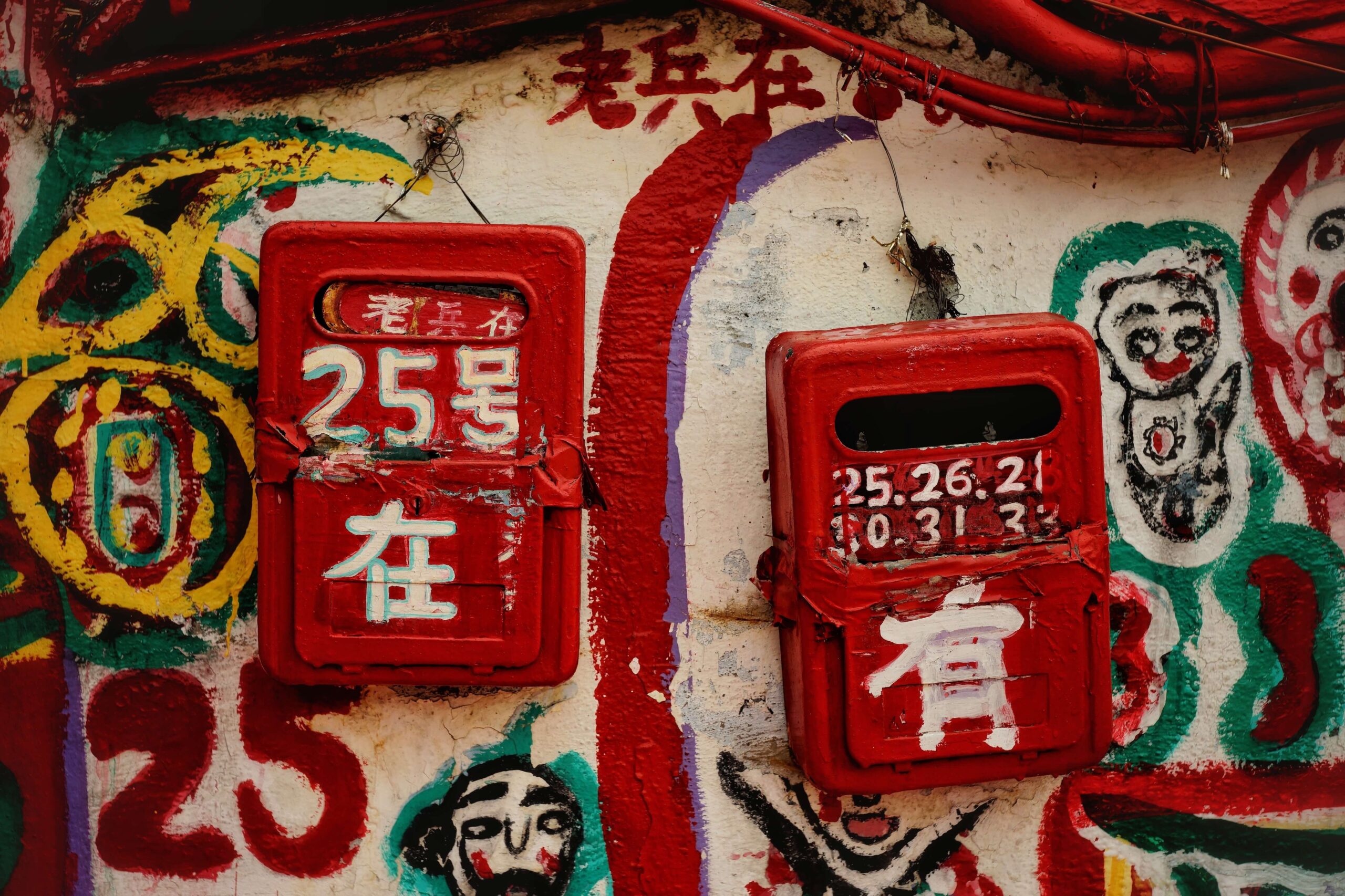Chinese Pinyin is a transliteration tool to write characters in Roman letters and represent the pronunciation of the language.
It is a fundament to learning Chinese pronunciation.
Contents

What is Chinese Pinyin?
· Chinese Pinyin Alphabet
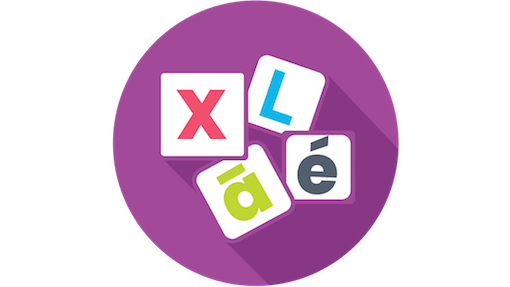
How are pinyin letters assembled into the sound of a Chinese character?
· Summary & Self-Check

What are Tones?
· Would I make myself understood if I just ignore the tones?
· Does English have anything similar to tones?
· The 5 Tones
· Summary&Self-Check

How to pronounce the Pinyin letters(initials)?
· The 21 Consonant initials
What Is Pinyin?
Pinyin is a Chinese system for transliterating Mandarin Chinese that contains 26 letters that are almost the same as the Roman alphabet, except for the missing letter v and an additional ü.
It is a transliteration tool to write the Chinese characters in Roman letters. This tool is used to help both foreign learners and native Chinese speakers to learn how to speak the Chinese language, as well as type on a keyboard.
The pronunciation of some of the letters of pinyin are similar (though not exactly the same) to the pronunciation of their Roman counterparts, while others are notably different.
Chinese Pinyin Alphabet
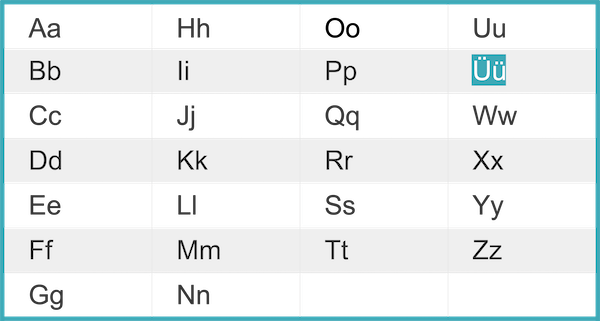
NOTE: Pinyin has “ü” instead of “v”.
How are pinyin letters assembled into the sound of a Chinese character?
In Chinese, the sound of every character corresponds to one syllable.
Chinese syllables are consist of 3 elements: the initial, the final and the tone.

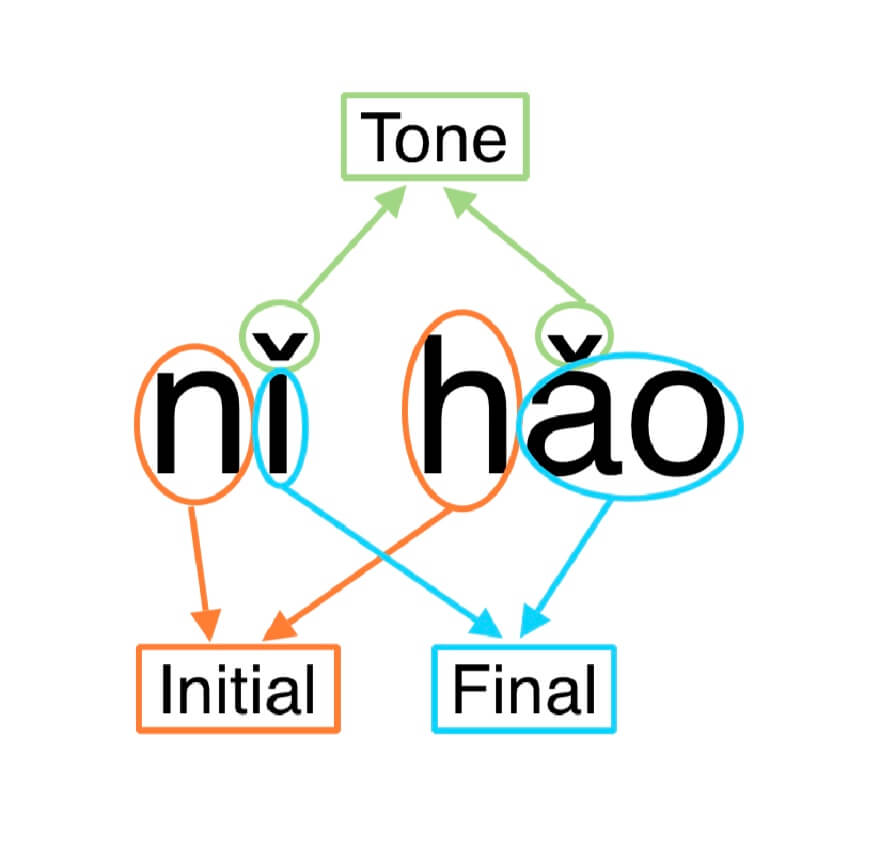
Word: 你好(nǐhǎo)
2 syllables: 你nǐ + 好hǎo
Structure:
Initial + Final + Tone = Syllable
n + i + ˇ = nǐ
h + ao + ˇ = hǎo
Initial can be 1 or 2 consonants
For example: ca, cha, sa, sha…etc.
Final contains at least 1 vowel, a final can be 1 or 2 vowels or a combination of vowel and consonants.
For example: ba, bai, ban, bang…etc.
Tones are marked on top of the syllable.
For example: á, ā
Pinyin:
Summary & Self-Check
Please view the following questions to review the Pinyin knowledge you just learned.
Click on the “Answer” tab to check if you are right!
What’s the difference between letters used in Pinyin and Roman alphabet?
Pinyin is almost the same as the Roman alphabet, but without the letter “v” and with “ü”.
How many syllables does one character correspond to?
Each character corresponds to one syllable.
What is a Chinese syllable consisted of?
Initial(optional) + Final + Tone = Syllable
Can you separate the following syllables: zaoshanghao.
Initials = 1 or 2 consonants
Finals = 1 or 2 vowels, or vowel-consonant combination
So, the answer should be: zao/shang/hao
Want to learn more about Mandarin pronunciation?
Check out our FREE e-book
7 Tips For Chinese Learners
What are Tones?
Mandarin Chinese is a tonal language, which means that the way a sound is pronounced directly affects the meaning of the sound. Mandarin’s tones give the language a very distinctive quality, but the tones can also be a source of miscommunication if not given due attention.
In Pinyin, tone markings are written over the central vowels in most syllables.

The pinyin syllable “ta” applied with different tones can mean completely different things.
Pinyin Character Meaning
tā 她 she
tǎ 塔 tower
tà 踏 to stamp
Would I make myself understood if I just ignore the tones?
No, the change of tones changes the meaning of the syllable.
So, it’s very important to pronounce Chinese words with correct tones.
Does English have anything similar to tones?
YES!
When you ask “what?” you use a rising tone to express your confusion.
When your football team wins the Superbowl “yay!”, you drop the tone of voice from a high pitch to a low pitch to express your excitement.
Well, technically that’s very similar to the tones used in Chinese It’s just a matter of rising and dropping the pitch.
English doesn’t have a concept of tone within a word like Chinese does, but we change our tone of voice when different emotions are applied to the words and sentences, and it’s really not that different at all than the tone in Chinese. You can think of the Chinese tones as confined tones to syllables.
The 5 Tones
In Mandarin Chinese there are 4 basic tones:
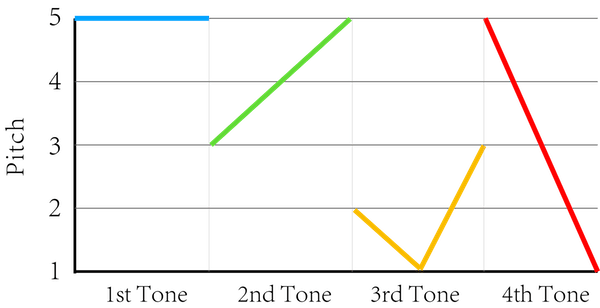
In the chart, number 5 is the highest pitch and l is the lowest pitch and varies by voice.
The length of the sound is not changed based on tone.
The 1st Tone
The 1st tone is marked with a flat line: ā
This is a steady high sound, produced as if it were being sung instead of spoken.The entire syllable is pronounced at the same pitch.
English Situation With Similar Tone of Voice:
—So…What are you doing after work?
You can think of the hesitating “so…” when pronouncing the first tone in Mandarin.
The 2nd Tone
The 2nd tone is marked with a rising line: á.
This is a high-rising tone that rises from middle to high pitch.
English Situation With Similar Tone of Voice:
—What? She is not coming anymore?
You can think of the questioning “what?” when pronouncing the second tone in Mandarin.
The 3rd Tone
The 3rd tone is marked with a letter “v”: ă.
This tone is first falling and fading, then rising and growing strong.
Most people who study Chinese think this tone simply rises and falls. However, as you can see, it falls from a 2 to a 1 then rapidly goes up to a 3 in pitch.
English Situation With Similar Tone of Voice:
Mom: Did you finish your homework?
Son: *reading comic book* uh-huh…
You can think of “uh-huh” when pronouncing the third tone in Mandarin, just without the pause in the middle.
The 4th Tone
The 4th tone is marked with a falling line: à.
This is a quickly falling and fading tone.
The reason it falls quickly is that it falls from a 5 in pitch all the way down to 1 in pitch.
English Situation With Similar Tone of Voice:
—No! Don’t go!
You can think of the “No!” when pronouncing the fourth tone in Mandarin.
The 5th tone—neutral tone
The neutral tone has no marking to put above any vowel. This tone is used when the syllable is unstressed.
The tone of the Neutral tone depends on the tone of the character before it.
Knowing when and how to pronounce words the neutral tone is part of the secret to sounding like a native speaker.
More importantly, there are plenty of words that have the same pinyin spelling, its the neutral tone that differs the meaning:

东西(dōngxī) west and east
东西(dōngxi) thing(s)
地下(dìxià) underground
地下(dìxia) on the ground
So knowing the rules and patterns of the neutral tone words is a very important part of the Chinese language, also a necessary part to make yourself correctly understood and avoid confusion.
Learn about all the rules and pattern of neutral tone on Mandarhythm.
Tones:
Summary & Self-Check
Please try to say the following words with the correct tone.
Click on the “Answer” tab to check if you are right!
How to Pronounce the Pinyin letters(initials)?
In Pinyin, There are 22 Initials(声母shēngmǔ).
Including 21 common consonant(辅音fǔyīn) initials,as in this word 老师(lǎoshī), and 1 zero initial(零声母língshēngmǔ) which covers the situations where there is no consonant at the beginning of a syllable, as in this word 爱(ài).
The 21 Consonant initials
The 21 Consonant initials are what I’m going to introduce to you in the video below.
These consonant initials can be sorted out in groups depending on the tongue and mouth position when saying them.
b, p, m, f
The initials in this group are called labial initials, which means the speaker’s lips are involved when pronouncing the 4 consonants in this group.
In Mandarin, these 4 letters are called buo, puo, muo and fuo.
d, t, n, l
These 4 are called Alveolar initials, which means when saying these sounds, the tip of the tongue touches the hard ridge as shown in the video.
In Mandarin, these 4 letters are called de, te, ne and le.
g, k, h
And These 3 consonants are called Velar initials, which means they are made by touching the back of the tongue to the soft palate.
In Mandarin, these 3 letters are called ge, ke and he.
j, q, x
These consonants are called palatal initials, All 3 of these sounds are pronounced with the surface of the tongue, touching the hard palate, or almost touching the hard palate.
In Mandarin, these 3 letters are called jee, qee and xee.
zh, ch, sh, r
This is the last group of consonant initials, When pronouncing those 4 retroflex consonants, the tongue is curled back into a concave position; with the tip of the tongue touching the hard palate.
In Mandarin, these 4 letters are called zhuh, chuh, shuh and ruh.

Want 7 More Pronunciation Tips For Chinese Learners?
Download the FREE E-Book Now!

